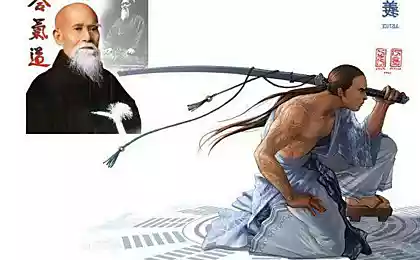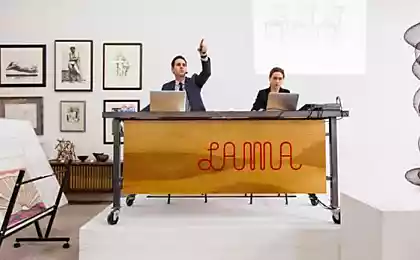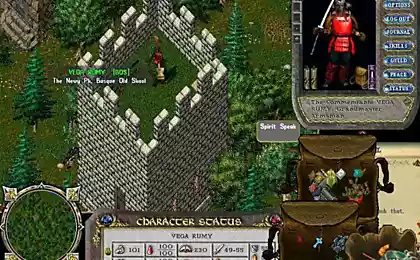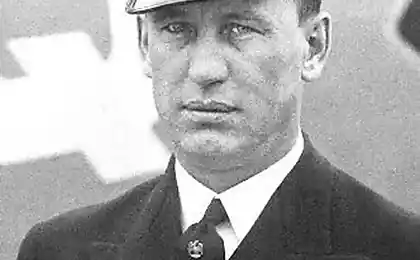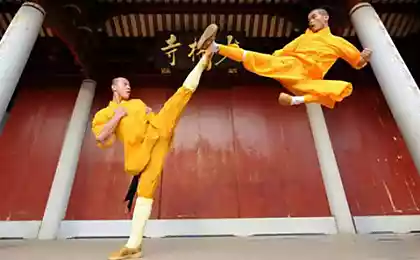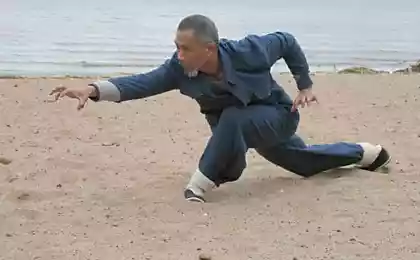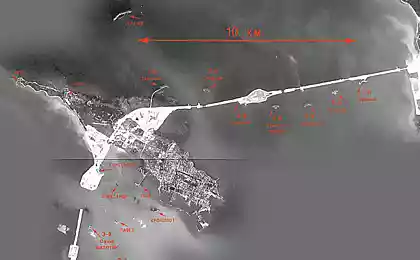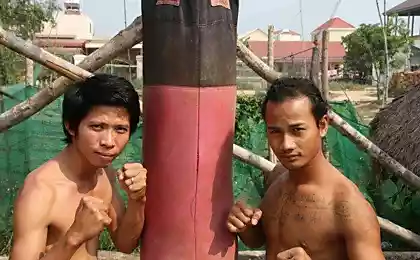2195
Great martial arts, which you hardly heard
There are many styles of martial arts. Some of them are in the movies, the other show on television. But there are also those who are not considered to be the most beautiful screens, and there are very ancient, which have reached us in its original condition and did not have time oglamuritsya. Here are a few examples of the hard martial arts, which you are unlikely to teach.
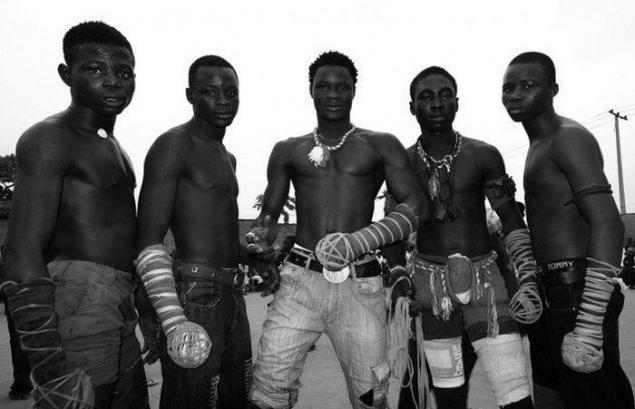
Dam based on ancient traditions of boxing in Egypt and is a deadly martial art created by people of Hausa (Hausa people) from West Africa, many of whom travel between villages and perform martial ceremony and fight with all comers. The main weapon of the dam are hitting forte fist, also known as "spear." The fists are wrapped in a piece of cloth covered much knotted cord, and leading foot soldier wrapped in a thick chain. It seems to hit people in the face of stiff enough to butcher from West Africa. They need more and are wrapped his legs in a toothed metal to accurately let a little blood. An interesting note: many of the modern dam trainees traveling from village to village before the fighting ritual smoke marijuana.
Bokator (Bokator)
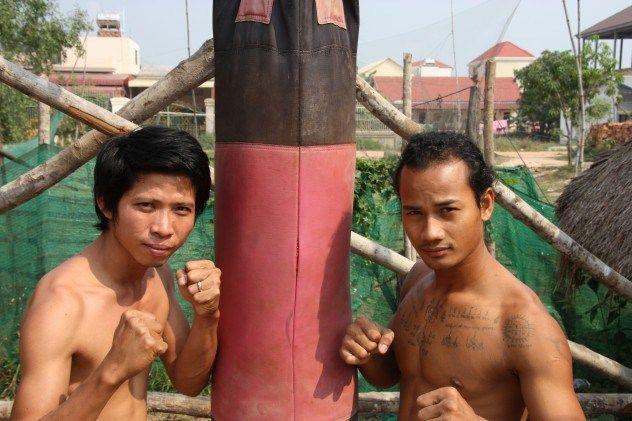
Bokator - martial art originally from Cambodia, appeared during the armies of Angkor (Angkor), which were among the best on the battlefields of Indochina more than 1,700 years ago. Bokator translated as "beating a lion," and the name comes from an ancient legend which tells of a person engaged in Bokatorom, found themselves face to face with a man-eating lion. According to legend, the warrior killed the bloodthirsty animal is a blow directed knee. Like many other martial arts, Bokator based on the movements and mannerisms of various animals such as eagles, cranes, horses, snakes and of course the lions. From other martial arts Bokator distinguished cruelty and practical on the battlefield. Bokatore in the presence of 10 000 different techniques, such as elbows and knees, fixation of joints, rolls and much more - it is a deep and diverse art, providing endless opportunities to soldiers in combat.
Coups and throws
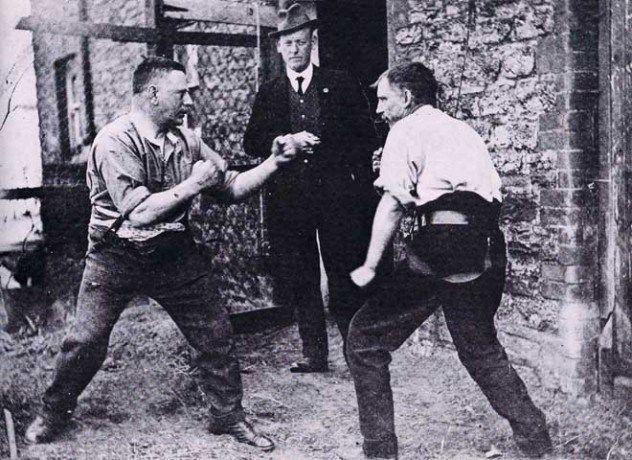
This martial art is actually more severe than it sounds. In fact, it should be called "maim and kill," as it is to this end, the combat system in the south of the United States in the 18th and 19th century. The term "gouging" is also used to describe this style of combat, due to the fact that one of the most common techniques were eye gouging, with this was no ordinary poke in the eye. Soldiers' coups and surges "have focused on the maximum disfigurement and unlimited cruelty, comparable to a small number of other martial arts. Some of them, according to rumors, even sharpened their teeth into sharp weapon, they bit off ears, noses, lips and fingers of his opponents. And considering that the genitals are not protected by the special rule, a lot of men have lost their courage during these cold-blooded clashes. This heartless cruelty - the main reason that "Coups and throws" infrequently discussed or practiced in the modern "civilized" times. And since most of the methods were not officially ordered, and may not be used without the risk of severe injury, is a martial art for the most part ignored by the modern society of martial arts. Most people today, even those who like to fight, cruel enough for pulling out eyes, biting his neck, tearing off genitals used in "coups and throws."
Buck
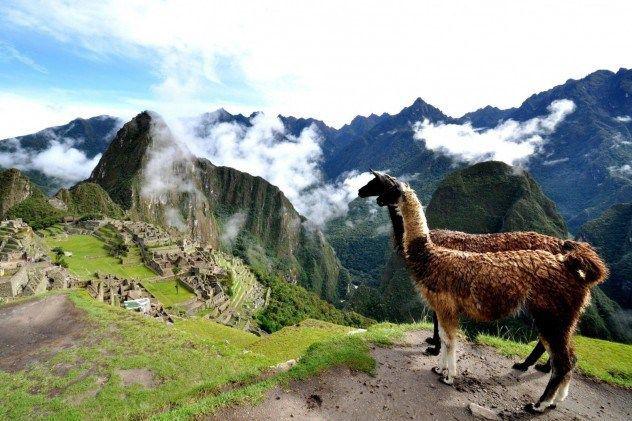
Buck, the creation of the poor slums of Lima, Peru and is dangerously violent martial art that teaches not only quick to maim and / or kill your opponent, but also to use deception and "not honest" tactics such as the use of hidden weapons. Martial arts was coined in the 1980s, former Marine and prisoner, Roberto Pooh Bezada (Roberto Puch Bezada), and officially classified the modern hybrid martial art that includes various elements of jiu-jitsu and street fighting Vale Tudo (Vale Tudo). Common methods include seizures and fractures of hands, ruthless strangulation and accurate strikes to vital organs, all this is happening at a rapid pace in order to defeat the opponent before they realize what danger they face. The result is a bruising style blitzkrieg that is incredibly difficult to predict.
Lerdrit
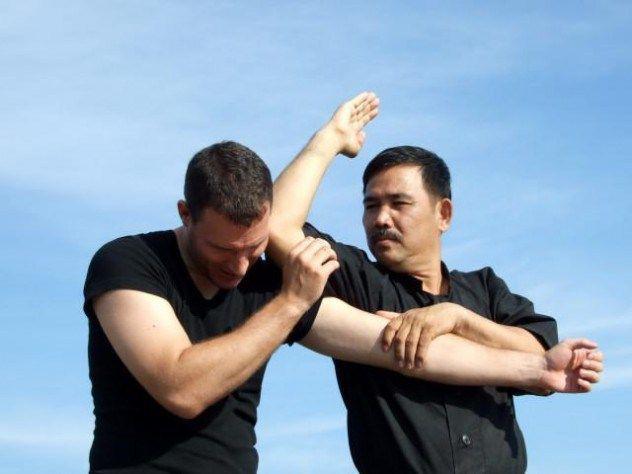
Lerdrit - modern development of traditional Thai combat techniques, which involved the elite special forces of the Thai royal army. Basic principles lerdrita like his predecessors (Muay Thai (Muay Thai), Muay Boran (Muay Boran)). However, there are some key differences, which give it a new level of coolness. Soldiers are trained to attack without warning, immediately throw the opponent to the ground and ending the fight with one of the killer powerful blows, such as a blow to the throat with his boot or elbow in the head. These methods are aimed at preventing injuries, applying such "proof" of the body, like the knees, hands, leg and above the classic elbow. As is the case with other military martial arts goal lerdrita radical and it is specifically designed for situations where a person is between life and death. It is not for the beating, and for deprivation of life.
The system of unarmed combat
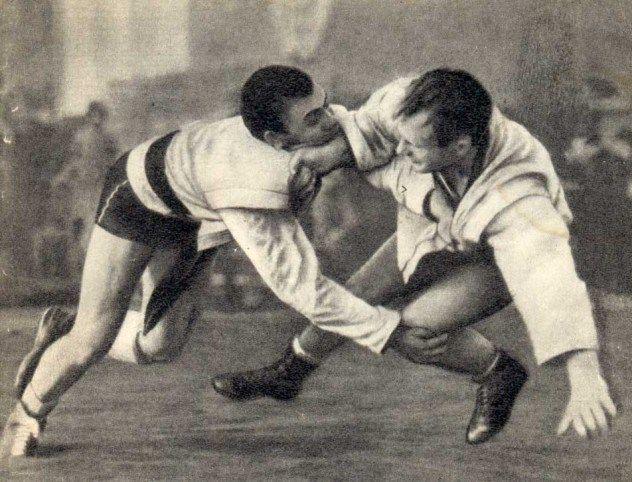
Let's be honest - to survive in Russia, you have to be a little crazy. It is not surprising that the system (the common name of several species of martial arts used by Russian special forces) are so cool and efficient in terms of "belief" capitalist pigs. The system focuses on the control of major parts of the body - the elbows, neck, knees, waist, ankles and shoulders, using strong and precision strikes. The main philosophy of systems based on the laws of biomechanics and anatomy, and most of the training is the study of the natural vulnerability of the human body in order to then apply it to their own purposes. Another unique characteristic of the system is that it does not focus only on the battle one-on-one without a weapon, as in many other martial arts. On the contrary, here we study the possibility of a fight with multiple opponents, attacking at the same time with different weapons in their hands. After all, what could be better than to blame any Ambala? Well, for example, to win over five or six thugs.
Jailhouse Rock

Jailhouse Rock is one of only two martial arts that have emerged in the United States. Created in the cutthroat world (yes, guessed) US prison system, prison rock - a great example of a fight, without limitation, designed by people who have nothing to do but to fight and swing. Jailhouse Rock is distinguished by its brutal training methods, one of which is "52 uplifting." Deck of cards scattered on the floor, and trainees must raise them all one by one, until they cruelly beaten three or more other people.
Kalari Payat
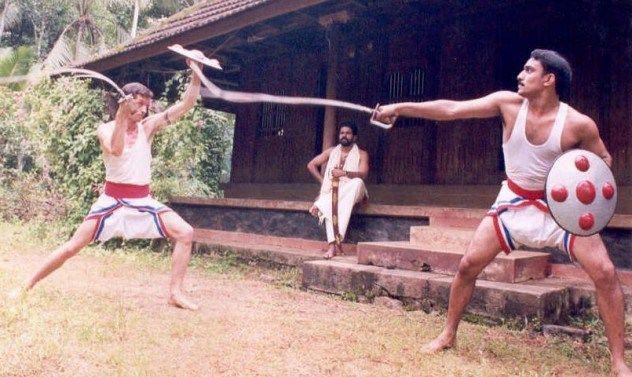
Kalari Payat appeared in the southern Indian state of Kerala (Kerala) and is universally recognized as the oldest martial art in the world, and the ancestor of many popular martial arts around the world. Oral work argues that it was created by an incarnation of the Hindu deity Vishnu, who is described as "Guardian of the Universe" and which has "universal form that can not be the man to comprehend." Kalari Payat has many subspecies and different forms, each of which specializes in combat, with both arms and without. One of the most significant subspecies is Marma Artie (Marma Arti) (blows to vital points), which is "in the hands" Master can instantly paralyze or kill with a single, surgical strike in one of the 108 ganglia, which are considered highly vulnerable. And, given that they are so dangerous that they are experiencing the pangs of conscience, the master of this powerful art also study medical system Siddhi (Siddha), which emerged from the same ancient teachings.
Silat
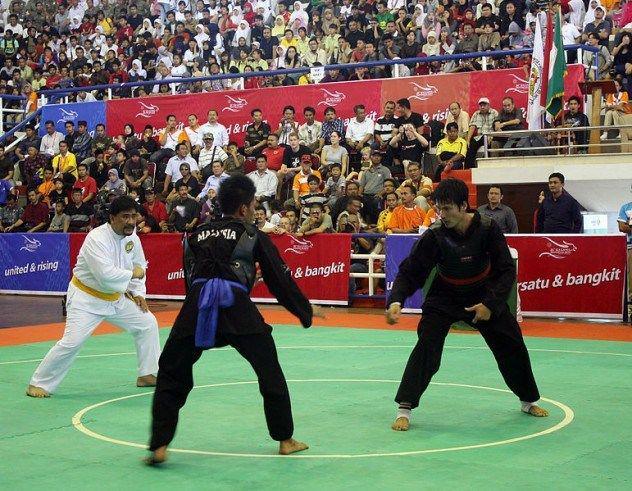
Silat - an umbrella term for hundreds of different fighting styles developed ruthless tribes from Malaysia, Singapore and the Philippines. In Silat includes hitting, twisting joints, grabs, throws and the use of knives. The first mention of silat in its current form was found in Sumatra. There, according to legend, a woman created a combat system based on the observation of wild animals, as is the case with many other martial arts. Currently Silat applied several military groups around the Malay Archipelago and the surrounding land, as well as well-known pirate clans from the South China Sea (South China Sea).
Okichitau

Okichitau is one of the few surviving examples of American Indian martial arts and is based on fighting receptions tribes Plains Cree (Plains Cree First Nations). Okichitau was created by George Lepine (George J Lepine), who studied Judo, Taekwondo and Hapkido (hapkido), and who also knew how to handle "weapons club" (the traditional weapon of Indians), and mastered the techniques of throwing tomahawk - is mixed martial arts, combining the fury of the fighting spirit of the Indians from the time-tested techniques of popular martial arts. Techniques used in okichitau often suggest the presence of weapons. As in the case of aikido, even if the fighter does not have the arms, his / her strokes are performed in such a way as if he had a weapon. For example, the hands are used as tomahawks, and kicks reminiscent butting spear. The official reception okichitau also present many techniques of using the knife. After all, why teach the martial art of Indians, if it does not teach you how best to scalp a white man?
A source

Dam based on ancient traditions of boxing in Egypt and is a deadly martial art created by people of Hausa (Hausa people) from West Africa, many of whom travel between villages and perform martial ceremony and fight with all comers. The main weapon of the dam are hitting forte fist, also known as "spear." The fists are wrapped in a piece of cloth covered much knotted cord, and leading foot soldier wrapped in a thick chain. It seems to hit people in the face of stiff enough to butcher from West Africa. They need more and are wrapped his legs in a toothed metal to accurately let a little blood. An interesting note: many of the modern dam trainees traveling from village to village before the fighting ritual smoke marijuana.
Bokator (Bokator)

Bokator - martial art originally from Cambodia, appeared during the armies of Angkor (Angkor), which were among the best on the battlefields of Indochina more than 1,700 years ago. Bokator translated as "beating a lion," and the name comes from an ancient legend which tells of a person engaged in Bokatorom, found themselves face to face with a man-eating lion. According to legend, the warrior killed the bloodthirsty animal is a blow directed knee. Like many other martial arts, Bokator based on the movements and mannerisms of various animals such as eagles, cranes, horses, snakes and of course the lions. From other martial arts Bokator distinguished cruelty and practical on the battlefield. Bokatore in the presence of 10 000 different techniques, such as elbows and knees, fixation of joints, rolls and much more - it is a deep and diverse art, providing endless opportunities to soldiers in combat.
Coups and throws

This martial art is actually more severe than it sounds. In fact, it should be called "maim and kill," as it is to this end, the combat system in the south of the United States in the 18th and 19th century. The term "gouging" is also used to describe this style of combat, due to the fact that one of the most common techniques were eye gouging, with this was no ordinary poke in the eye. Soldiers' coups and surges "have focused on the maximum disfigurement and unlimited cruelty, comparable to a small number of other martial arts. Some of them, according to rumors, even sharpened their teeth into sharp weapon, they bit off ears, noses, lips and fingers of his opponents. And considering that the genitals are not protected by the special rule, a lot of men have lost their courage during these cold-blooded clashes. This heartless cruelty - the main reason that "Coups and throws" infrequently discussed or practiced in the modern "civilized" times. And since most of the methods were not officially ordered, and may not be used without the risk of severe injury, is a martial art for the most part ignored by the modern society of martial arts. Most people today, even those who like to fight, cruel enough for pulling out eyes, biting his neck, tearing off genitals used in "coups and throws."
Buck

Buck, the creation of the poor slums of Lima, Peru and is dangerously violent martial art that teaches not only quick to maim and / or kill your opponent, but also to use deception and "not honest" tactics such as the use of hidden weapons. Martial arts was coined in the 1980s, former Marine and prisoner, Roberto Pooh Bezada (Roberto Puch Bezada), and officially classified the modern hybrid martial art that includes various elements of jiu-jitsu and street fighting Vale Tudo (Vale Tudo). Common methods include seizures and fractures of hands, ruthless strangulation and accurate strikes to vital organs, all this is happening at a rapid pace in order to defeat the opponent before they realize what danger they face. The result is a bruising style blitzkrieg that is incredibly difficult to predict.
Lerdrit

Lerdrit - modern development of traditional Thai combat techniques, which involved the elite special forces of the Thai royal army. Basic principles lerdrita like his predecessors (Muay Thai (Muay Thai), Muay Boran (Muay Boran)). However, there are some key differences, which give it a new level of coolness. Soldiers are trained to attack without warning, immediately throw the opponent to the ground and ending the fight with one of the killer powerful blows, such as a blow to the throat with his boot or elbow in the head. These methods are aimed at preventing injuries, applying such "proof" of the body, like the knees, hands, leg and above the classic elbow. As is the case with other military martial arts goal lerdrita radical and it is specifically designed for situations where a person is between life and death. It is not for the beating, and for deprivation of life.
The system of unarmed combat

Let's be honest - to survive in Russia, you have to be a little crazy. It is not surprising that the system (the common name of several species of martial arts used by Russian special forces) are so cool and efficient in terms of "belief" capitalist pigs. The system focuses on the control of major parts of the body - the elbows, neck, knees, waist, ankles and shoulders, using strong and precision strikes. The main philosophy of systems based on the laws of biomechanics and anatomy, and most of the training is the study of the natural vulnerability of the human body in order to then apply it to their own purposes. Another unique characteristic of the system is that it does not focus only on the battle one-on-one without a weapon, as in many other martial arts. On the contrary, here we study the possibility of a fight with multiple opponents, attacking at the same time with different weapons in their hands. After all, what could be better than to blame any Ambala? Well, for example, to win over five or six thugs.
Jailhouse Rock

Jailhouse Rock is one of only two martial arts that have emerged in the United States. Created in the cutthroat world (yes, guessed) US prison system, prison rock - a great example of a fight, without limitation, designed by people who have nothing to do but to fight and swing. Jailhouse Rock is distinguished by its brutal training methods, one of which is "52 uplifting." Deck of cards scattered on the floor, and trainees must raise them all one by one, until they cruelly beaten three or more other people.
Kalari Payat

Kalari Payat appeared in the southern Indian state of Kerala (Kerala) and is universally recognized as the oldest martial art in the world, and the ancestor of many popular martial arts around the world. Oral work argues that it was created by an incarnation of the Hindu deity Vishnu, who is described as "Guardian of the Universe" and which has "universal form that can not be the man to comprehend." Kalari Payat has many subspecies and different forms, each of which specializes in combat, with both arms and without. One of the most significant subspecies is Marma Artie (Marma Arti) (blows to vital points), which is "in the hands" Master can instantly paralyze or kill with a single, surgical strike in one of the 108 ganglia, which are considered highly vulnerable. And, given that they are so dangerous that they are experiencing the pangs of conscience, the master of this powerful art also study medical system Siddhi (Siddha), which emerged from the same ancient teachings.
Silat

Silat - an umbrella term for hundreds of different fighting styles developed ruthless tribes from Malaysia, Singapore and the Philippines. In Silat includes hitting, twisting joints, grabs, throws and the use of knives. The first mention of silat in its current form was found in Sumatra. There, according to legend, a woman created a combat system based on the observation of wild animals, as is the case with many other martial arts. Currently Silat applied several military groups around the Malay Archipelago and the surrounding land, as well as well-known pirate clans from the South China Sea (South China Sea).
Okichitau

Okichitau is one of the few surviving examples of American Indian martial arts and is based on fighting receptions tribes Plains Cree (Plains Cree First Nations). Okichitau was created by George Lepine (George J Lepine), who studied Judo, Taekwondo and Hapkido (hapkido), and who also knew how to handle "weapons club" (the traditional weapon of Indians), and mastered the techniques of throwing tomahawk - is mixed martial arts, combining the fury of the fighting spirit of the Indians from the time-tested techniques of popular martial arts. Techniques used in okichitau often suggest the presence of weapons. As in the case of aikido, even if the fighter does not have the arms, his / her strokes are performed in such a way as if he had a weapon. For example, the hands are used as tomahawks, and kicks reminiscent butting spear. The official reception okichitau also present many techniques of using the knife. After all, why teach the martial art of Indians, if it does not teach you how best to scalp a white man?
A source

